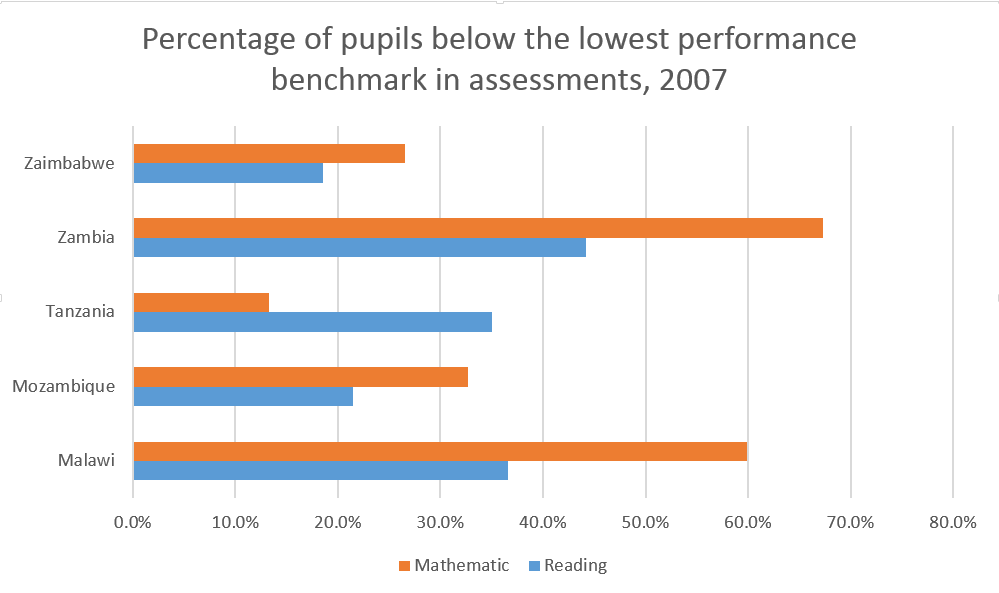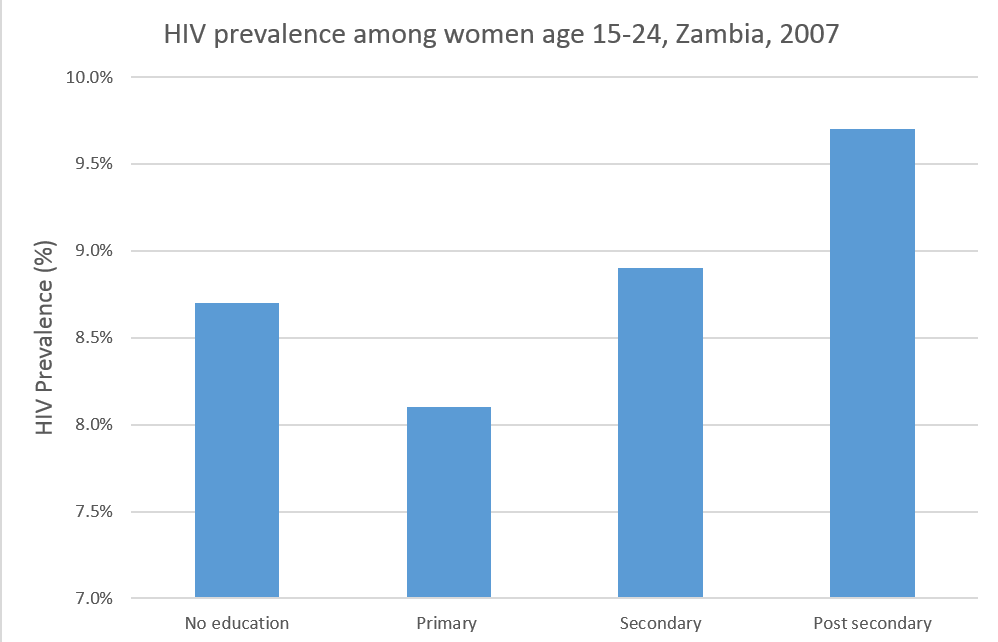You are here
EPDC Spotlight on Zambia
The Intersection of Health and Education
This is the latest post in our Country Spotlight series, where we highlight a different country and the resources we offer, such as data, country profiles, research or other tools that users have available to them through the website. In this post our intern Maxine Wang highlights the data resources we have for Zambia.
Zambia is a landlocked country in Southern Africa with a population of 14.54 million. In 2010, it was classified by World Bank as one of the world’s fastest growing economies, and has maintained GDP growth above 6% every year since then.
Despite its strong economic growth, Zambia has suffered from the devastating effects of the HIV/AIDS epidemic. According to the 2007 Demographic and Health Survey in Zambia (DHS), HIV/AIDS prevalence was 16%, meaning one in every seven people were living with HIV or AIDS. Children in Zambia are also vulnerable, with nearly 12,000 children newly infected with HIV in 2013, roughly 33 new child infections each day. This country spotlight highlights the intersection between health and education, focusing on the impact of the HIV/AIDS epidemic on Zambia’s education system.
Education in Zambia
The official primary school entrance age is 7 in Zambia. The system is structured so that students attend primary school for 7 years, lower secondary for 2 years, and upper secondary for 3 years. While local languages are used throughout the country, the official language is English, which is also the language of instruction.
There are roughly 2.8 million students of primary school age and 1.6 million of secondary school age in Zambia. In primary school, the net enrollment rate is 93.7, which is close to universal access.
However, net attendance rate is only 82.4, suggesting that more than 10% of students enroll but do not attend school. The issue of lower attendance rates also compounded with regional disparity. Figure 1 shows that net attendance rate in primary school in 2007, ranged from a low of 75% in the Western area to a high of 89% in the South.
Moreover, many children are simply not enrolled in school. According to EPDC’s Out of School Profile for Zambia, 14% of children age 7 -14, or roughly 376,000 children, were out of school in Zambia in 2007. This issue is particularly severe among youth from rural areas -- children from rural areas are 4.5 times more likely to be out of school than those from urban areas.
.png)
Figure 1 Net Attendance Rate in Primary School by Sub-national Areas
Learning Outcomes
Additionally, educational quality remains an issue in Zambia. Class sizes are large, but higher than regional averages. According to UNESCO Institute for Statistics (UIS), the pupil-teacher ratio in primary school is 49.2.
Nonetheless, according to data from SACMEQ 2007, Zambia has the largest proportion of students below the lowest benchmark both in reading (43.8%) and mathematic assessments (64.3%) compared to other nations in East Africa (Figure 2).
Additionally, EPDC’s National Education Profile for Zambia indicates that compared to other nations, Zambia ranks at the 63rd percentile in access, as measured by net enrollment rate, and the 10th percentile in learning, as measured by youth literacy rate. More data regarding learning outcomes in Zambia can be found in the EPDC database, and diverse graphics with different indicators are available by searching for the most recent SACMEQ and utilizing the visualization feature.
Figure 2 Percentage of pupils below the lowest benchmark in assessments by country
HIV and Education
The HIV/AIDS epidemic has negatively affected education in Zambia. High prevalence rates among teachers have an impact on education, as teachers with HIV may miss class more frequently, resulting in loss of teaching time. Moreover, deaths due to the AIDS epidemic result in a loss of qualified teachers. According to a USAID report, three quarters of the new teachers trained each year are needed to replace those who have died of AIDS in recent years in Zambia.
At the same time, education can be a key source of knowledge to fight against HIV. Placing a high value on the importance of education in HIV/AIDS prevention, United Nations (UN) and World Bank experts have stated that education may be the single most effective preventive weapon against HIV epidemic. The Global Campaign against HIV and AIDS estimated that if universal primary education for children is available, 700,000 cases HIV/AIDS could be prevented each year. According data from the 2007 DHS in Zambia, those with primary education are 20% more likely to know that HIV cannot be transmitted by mosquito bites and 42% are more likely to have a comprehensive knowledge about HIV than those who have no education.
Recognizing that education can be used as an approach to address the HIV pandemic, in 2000, Zambia incorporated an HIV prevention program into the Basic School Curriculum Framework, which includes promoting safe sexual behavior and teaching pupils more tolerant attitudes towards those living with HIV.
However, it is important to note that in Zambia, women with more than secondary education have the highest prevalence of HIV than those who have less education (Figure 3). Although we do not know exactly when or how these women were exposed, this finding does suggest that even well-educated women are still vulnerable to being exposing to HIV. For Zambia government, more structural issues beyond the lack of knowledge of HIV needed to be addressed to fight against HIV.
Figure 3 HIV Prevalence among Women
EPDC Resources
Among other data sources, EPDC data collections for Zambia include administrative data from the Central Statistics Office (2010), household survey data from DHS (1992, 1996, 2000, 2001, 2002, 2007), MICS (2000), indicators derived from UIS data, and learning outcomes data including SACMEQ (2003, 2007).



Add new comment